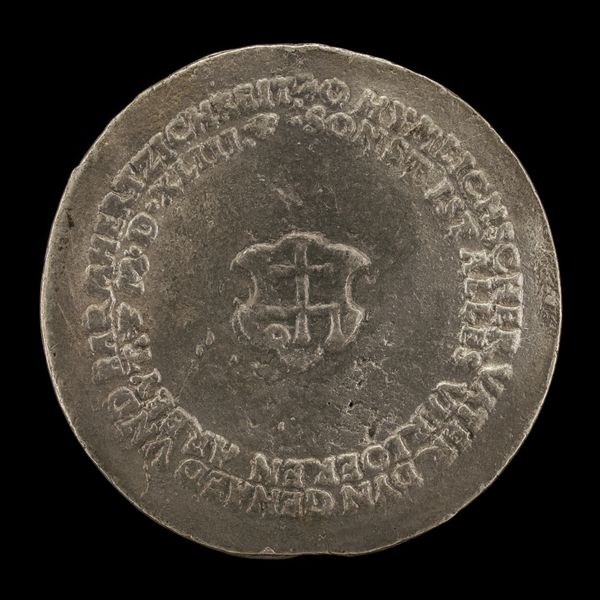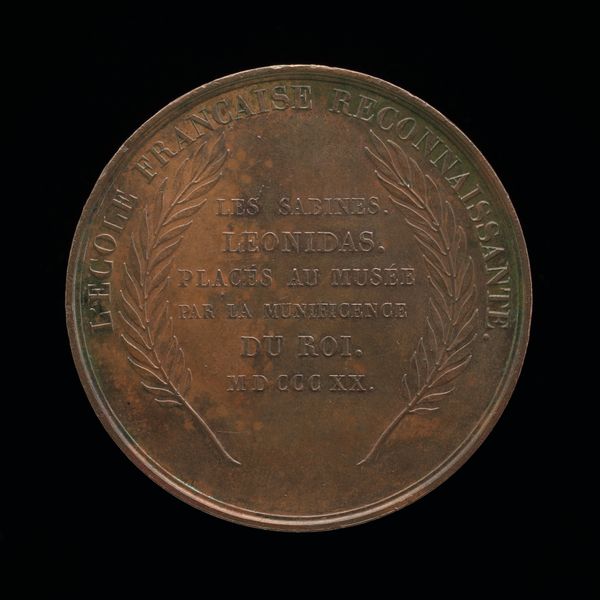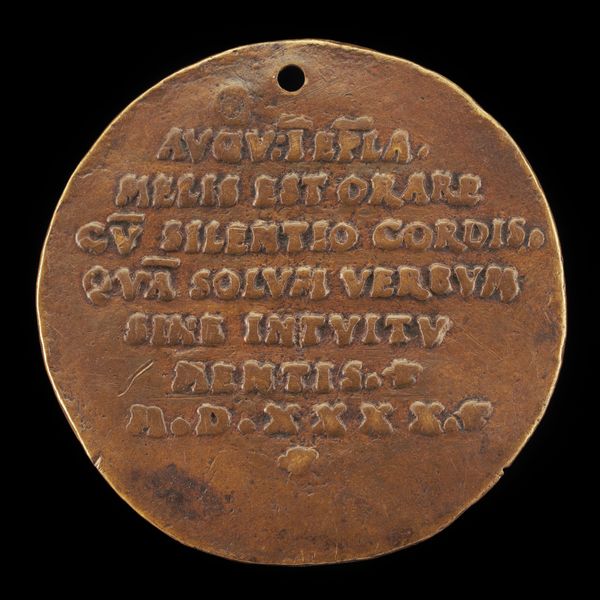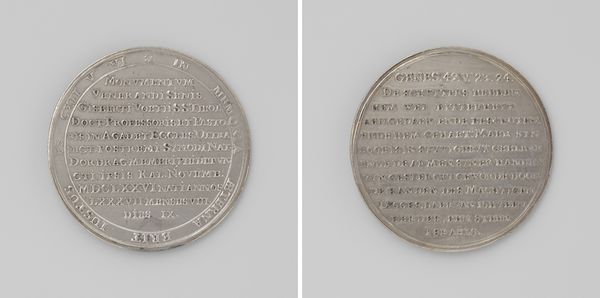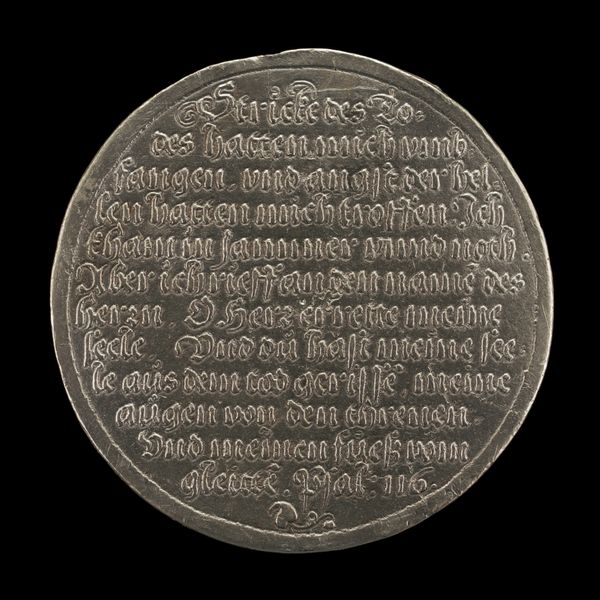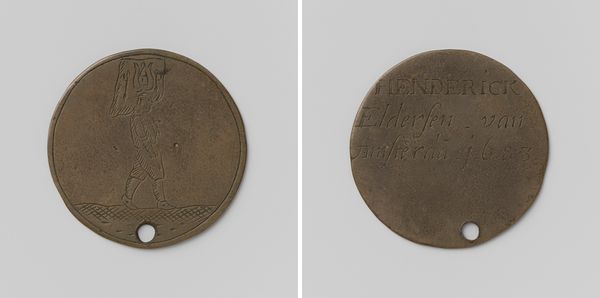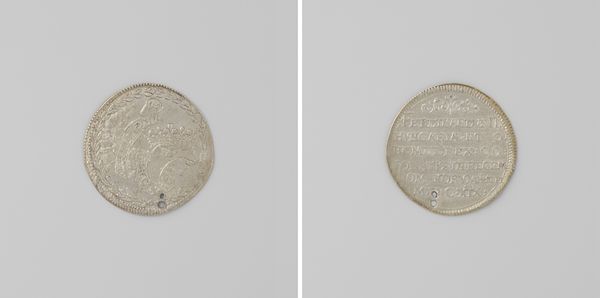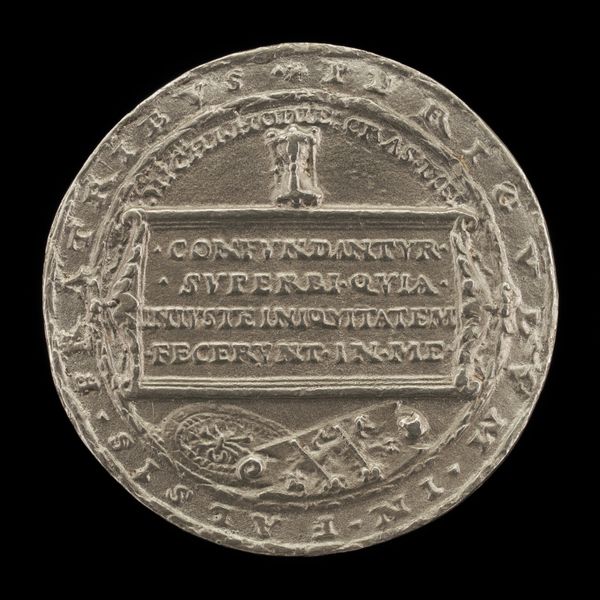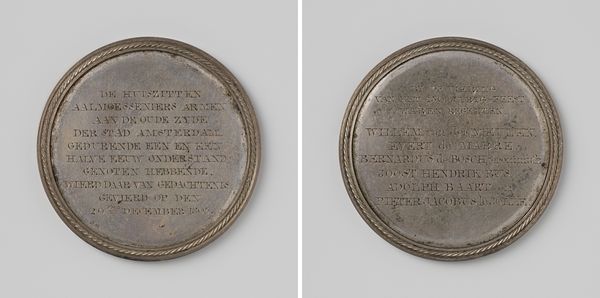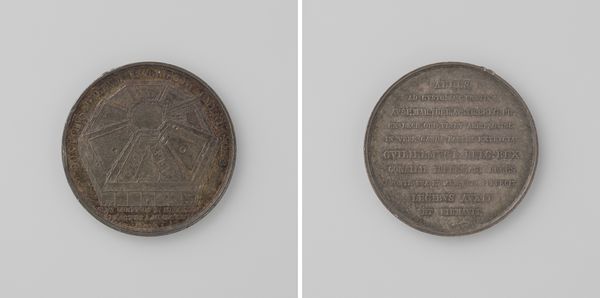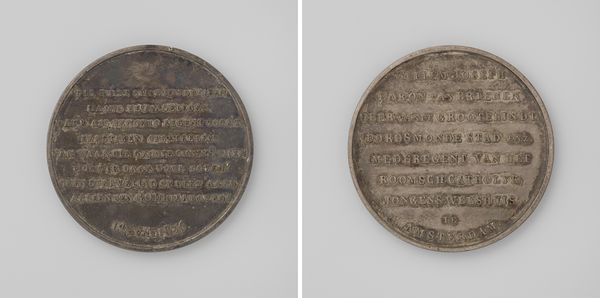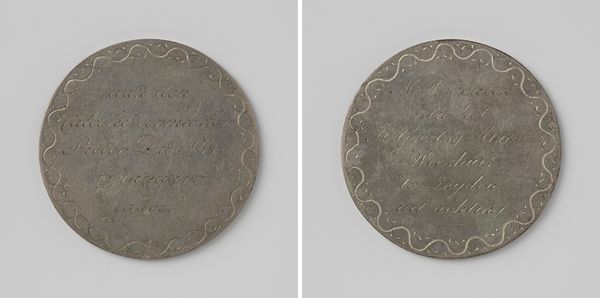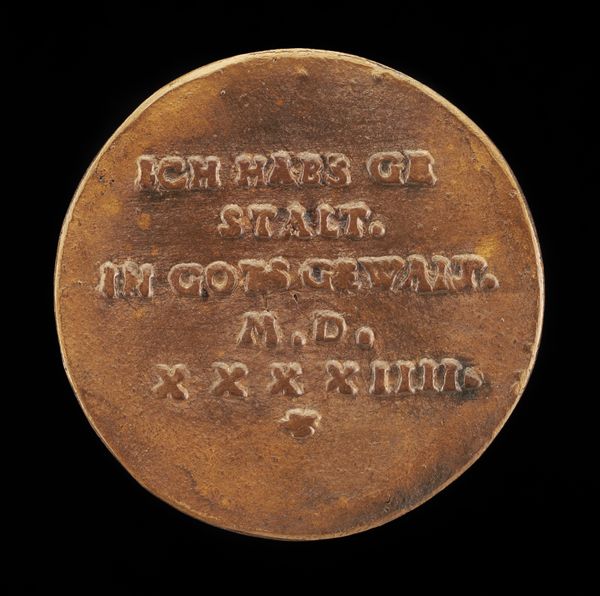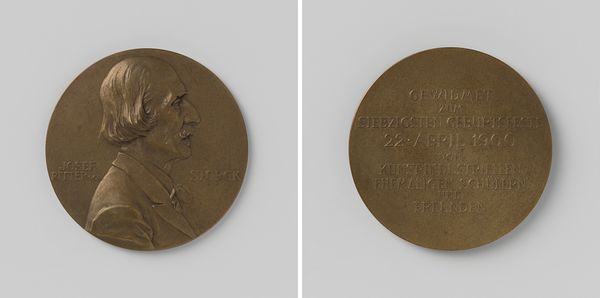![Inscription [reverse] by Friedrich Hagenauer](/_next/image?url=https%3A%2F%2Fd2w8kbdekdi1gv.cloudfront.net%2FeyJidWNrZXQiOiAiYXJ0ZXJhLWltYWdlcy1idWNrZXQiLCAia2V5IjogImFydHdvcmtzL2UyYTM0NTE4LTg2ZTMtNGFhZS04MzhjLTk0ZWUyYTJmMmFiYy9lMmEzNDUxOC04NmUzLTRhYWUtODM4Yy05NGVlMmEyZjJhYmNfZnVsbC5qcGciLCAiZWRpdHMiOiB7InJlc2l6ZSI6IHsid2lkdGgiOiAxOTIwLCAiaGVpZ2h0IjogMTkyMCwgImZpdCI6ICJpbnNpZGUifX19&w=3840&q=75)
sculpture
#
sandstone
#
medal
#
stone
#
sculpture
#
text structure
#
unrealistic statue
#
carved into stone
#
column text
#
sculpture
#
historical font
#
columned text
#
statue
Dimensions: overall (diameter): 6.9 cm (2 11/16 in.) gross weight: 73.74 gr (0.163 lb.) axis: 12:00
Copyright: National Gallery of Art: CC0 1.0
Editor: Here we have Friedrich Hagenauer's sandstone sculpture, "Inscription [reverse]," created in 1526. It looks like a large coin or medal, and it's covered in Latin text. What I find striking is how deliberately this object seems to mimic Roman imperial imagery. What can you tell me about this piece? Curator: That's a perceptive initial response. These medals were very popular, circulated amongst an educated public keen to make its mark. Think of them as a form of political or even personal propaganda. Hagenauer was working during a period of intense social and religious upheaval in Europe. The deliberate classical allusions and the use of Latin are not neutral choices; they’re loaded with significance. What do you notice about the names mentioned in the inscription? Editor: I see references to emperors… perhaps Maximillian and Charles? I wonder about the context of placing these imperial names on what seems to be a contemporary piece. Was Hagenauer attempting to legitimize someone or something? Curator: Exactly! The inscription is referencing the lineage and imperial authority these figures sought to connect themselves to. Furthermore, it's not just about emperors. It's about shaping public memory and legitimizing power structures. Who got to decide which stories were told, and how they were told in these pieces? How would an object like this function in civic spaces, as opposed to domestic collections? Editor: That’s fascinating. I hadn’t considered the implications of the setting. It makes me think about who the intended audience was and what impact this object may have had in shaping public perception. It’s so much more than just a pretty inscription, isn't it? Curator: Precisely. It invites us to consider art's complex interplay with politics and societal values. By examining pieces like this, we get insights into the worldviews of both the creator and the audiences. Editor: I hadn't thought about these medals being such active participants in shaping public opinion back then. I’ll definitely be looking at similar pieces with a different lens from now on!
Comments
No comments
Be the first to comment and join the conversation on the ultimate creative platform.
